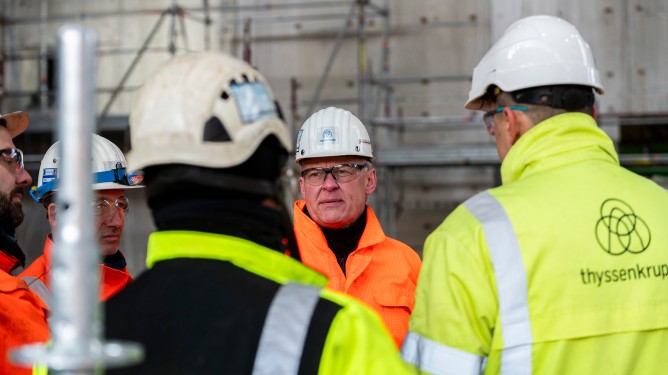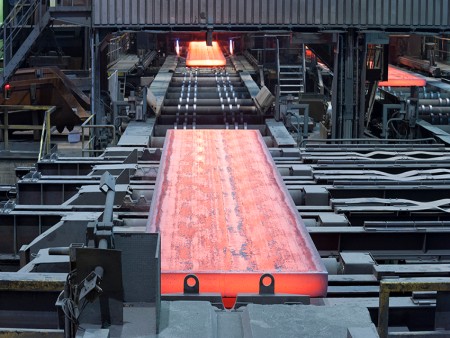Why exactly were the measures necessary?
The existing infrastructure is based on plants that were built in the 1950s, 60s and 70s. Looking ahead, these would not have offered us a good starting position for the necessary process innovations and product improvements. The new units now give us the perspective to further develop the Duisburg site in terms of quality and productivity in all relevant aspects. In addition, the investments will create useful synergy effects, for example in the areas of energy and logistics. In addition, by concentrating our hot rolling expertise at the Duisburg site, we will significantly increase our performance and be able to react much better and faster to customer requirements.
Because you mentioned customer requirements: What exactly do customers actually gain from the major investment in the new systems?
The systems are a quantum leap in terms of technology. Here in Duisburg, we will soon have the most modern hot strip mill and therefore the most modern metallurgical network in the whole of Europe. This will create ideal conditions for our steel material, for example for even better surfaces and thinner dimensions. Throughput and booking times will be shorter and customers will receive their material much faster than before.
thyssenkrupp Steel is working hard to achieve all these benefits: the major construction site in Bruckhausen is by far the largest single project in the company's current investment package. What makes the project so complex?
Various factors play a role. It starts with the size and nature of the construction site. The construction site is an industrial site that is over 120 years old and is the size of about eleven soccer pitches. It continues with the huge amount of materials used and external factors that we couldn't have taken into account when planning the project. For example, the coronavirus pandemic: we had major problems getting the skilled workers we needed for our construction site for over two years. Then the chip crisis and the situation around the Suez Canal caused us difficulties in procuring electrical components. And then there was the war in Ukraine. Here, too, many resources are still unavailable today, for example in the area of carrier materials and assembly, which we were still able to access without any problems a few years ago. All these things made the project a huge effort for everyone involved.
As things stand, the effort has paid off: the conversion is almost complete - the systems are due to go into operation this summer. What was the key to completing the project on time and on budget despite all the resistance?
In fact, we expect to reach the next milestones in the coming weeks, complete the facilities in the summer and then transfer them to the ramp-up phase. In my opinion, the fact that we have come so far since the end of October 2024 without any delays is also due to the great signal effect that the project has had: the employees have seen and felt directly what they are committed to and what they are working for. That a perspective for the future is being created here and that thyssenkrupp Steel is capable of making the necessary changes and developing further, even under the most difficult conditions.
Bruckhausen is not the first major project that you have been in charge of for thyssenkrupp Steel. How do you personally feel when such an ambitious construction project can be completed?
To be honest, I haven't even considered the idea yet, because the next important tasks are already waiting after this project. Our transformation is far from complete. But of course I will be happy and relieved when we come to an end in Bruckhausen. After all, this is a very important milestone that we are setting here for steel.
Thank you very much for the interview, Dr. Espenhahn.





